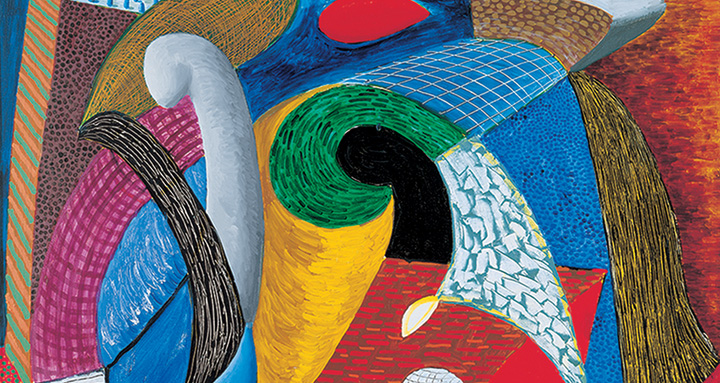
Wisconsin’s second-largest art collection is housed in a museum that is far more than a gallery.
The Chazen Museum of Art is home to more than 20,000 paintings, sculptures, drawings, prints, photos, decorative objects, and more. But the works it holds are far more than beautiful — they’re also a learning resource. And in 2015, those collections grew larger and more important, thanks to a new donation from the museum’s namesakes, Jerome and Simona Chazen.
Last July, the Chazens offered a gift valued at $28 million, which includes $5 million to support the Chazen Museum, $3 million to establish two faculty chairs, and artwork valued at $20 million, including paintings by some of the 20th century’s most celebrated figures: Robeth Motherwell (Elegy to the Spanish Republic, 1972); Roy Lichtenstein (Two Figures, 1977); and David Hockney (The Sixteenth V.N. Painting, 1992). Those artists were leaders in the modernist and post-modernist movements. Motherwell, a member of the New York School, helped to advance surrealism. Lichtenstein virtually defined pop art. And Hockney is one of the most influential British artists of the 20th and 21st centuries.
“My wife and I are avid collectors and, more, lifelong arts enthusiasts and arts-education advocates,” says Jerome Chazen. “We have a shared vision for the Chazen Museum of Art to become a world-class museum — a beacon for art lovers in Madison, across the state of Wisconsin, and in the bigger-picture arts landscape.”
“My wife and I are avid collectors and, more, lifelong arts enthusiasts and arts-education advocates.”
Jerome Chazen
As a free institution and a university museum, the Chazen is a resource for teachers of many disciplines — even ones that seem far removed from art and art history. James Nienhuis, for instance, is a UW professor of horticulture. He’s used the Chazen’s collection of Renaissance still-life paintings to show students how fruits and vegetables have changed over the centuries. He has shown his classes a picture by 17th-century Italian artist Giovanni Stanchi to illustrate how much plant breeders have changed the foods we eat.
“Vegetables [are] delicate,” Nienhuis told On Wisconsin magazine. “They don’t last. But still-life paintings show us what they looked like.”
Who knows what future teachers may find in the works of Motherwell, Hockney, and Lichtenstein — not to mention Stanchi and artists of the more distant past. These lessons are available thanks to the generosity of the Chazens and other donors.
“The Chazens have been unbelievably generous in their support of the museum,” says director Russell Panczenko, “and this bequest greatly furthers our mission to become a leading cultural resource for the Madison community and beyond.”
